In the late 1800s, seeking to create a healthy cross-breed that would lay eggs well and provide meat for the table, William Cook of Kent, England began crossing several different breeds of chickens. Eventually, the results of his experiments created a large, attractive, well-laying chicken that he named after his village, Orpington. Buff Orpington chickens are a favorite of backyard breeders because of their attractive colors, fluffy plumage, and gentle nature. These large, beautiful birds have sweet dispositions and are wonderful dual-purpose chickens. Orpington chickens require no prior chicken raising experience and are a good choice for total poultry beginners.
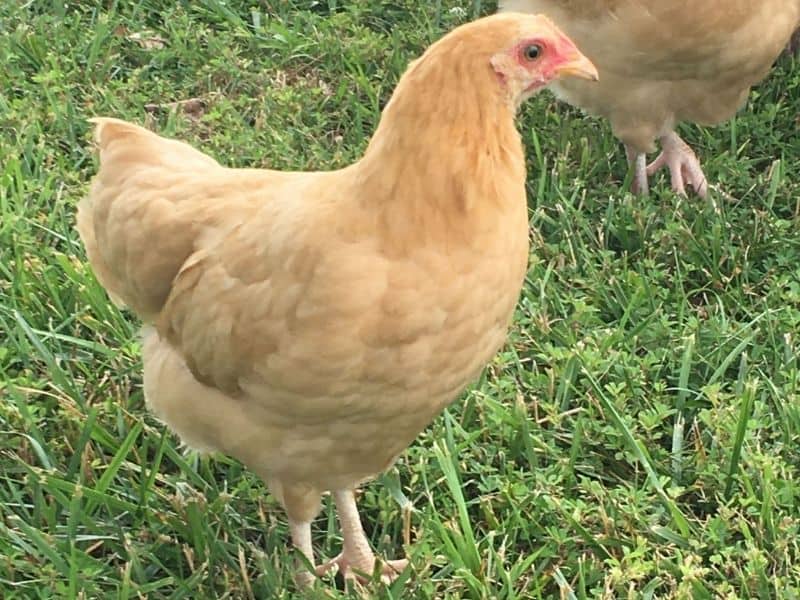
How To Raise Buff Orpington Chickens
History of Buff Orpington Chickens
During the late 1800s, something strange was happening on the farms of England. It seemed that everyone in rural areas became overly interested in breeding the perfect chicken, and this passion was dubbed “hen fever.” It was during this time when so many people were experimenting with cross-breeding chickens and creating new breeds of chickens that the Orpington chicken came into existence.
In Kent, England, William Cook began crossing his Minorca roosters with Black Plymouth Rock hens. Then, he took the offspring of that cross-breed and bred them with Langshan chickens. The result was a large, relatively fast-growing chicken that met all the qualifications that the butcher shops wanted.
Additionally, the hens of this breed laid eggs fairly well, making them an attractive choice for farmers who wanted to breed dual-purpose chickens on their farms. Eventually, Cook created different color variations, including the most popular color, buff.
The appearance of Buff Orpington Chickens
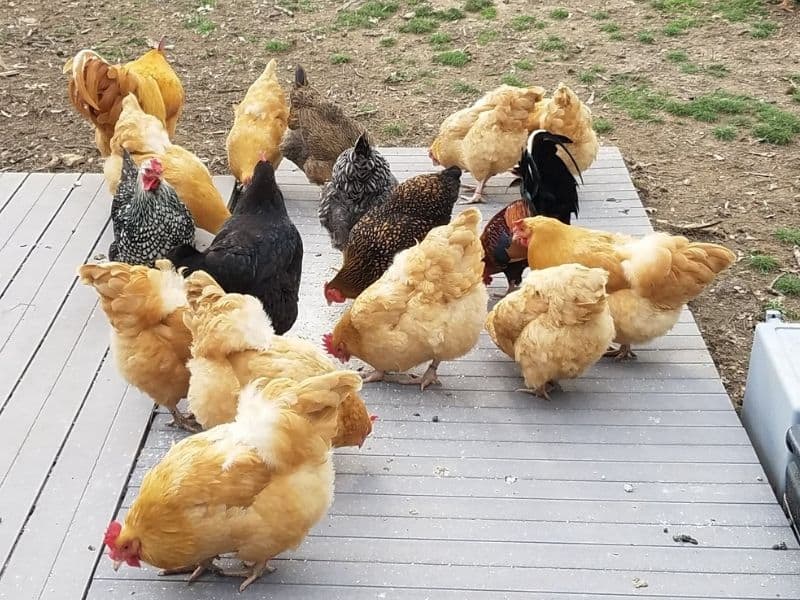
Orpington chickens are larger birds with plenty of fluffy feathers. The roosters can weigh on average 10 pounds, and the hens weigh between 7 and 8 pounds. They have white skin and large, red, single combs and wattles. Their inquisitive, bright eyes are black, and they have clean legs with pinkish-white scales. Their beaks are also pinkish-white, and they have five-pointed combs.
Orpingtons come in a range of colors. The most popular color, buff, is a golden yellow color that almost glows in bright sunlight. They also come in black, which was their original color, as well as white, blue, and splash. Modern Orpingtons also are available in a lovely grayish color called lavender.
Orpingtons have heavy bodies with a low carriage and a curved, low back. The roosters have eye-catching fluffy tails. Orpingtons come in a bantam variety as well as a traditional size. The bantam Orpingtons generally weigh around 3 or 4 pounds.
Egg Laying Habits of Buff Orpingtons
While Orpington chickens are not the most productive egg layers, they actually lay fairly well for a bird that has such a large body. Generally, Orpingtons will lay around 200-250 eggs per year, which translates to an average of 3 to 5 eggs per week. Their eggs are large to extra large in size and medium brown in color (see more chicken breeds that lay brown eggs). They will begin laying eggs around 5 or 6 months of age.
Personality and Behavior of Orpington Chickens
Orpingtons are a wonderful choice for those who want to raise a backyard flock in an urban or suburban setting because they are so quiet, calm, and friendly. Often, these people are looking for utilitarian pets, and Orpingtons are excellent pets. They tolerate handling well, and if you are consistent in giving them treats, will learn to come when called.
Orpingtons are seldom mean, and even the roosters hardly ever become aggressive. For this reason, they are an excellent breed of chickens for families with small children. They are a wonderful choice for children’s 4-H projects.
Broodiness and Mothering of Buff Orpington Chickens
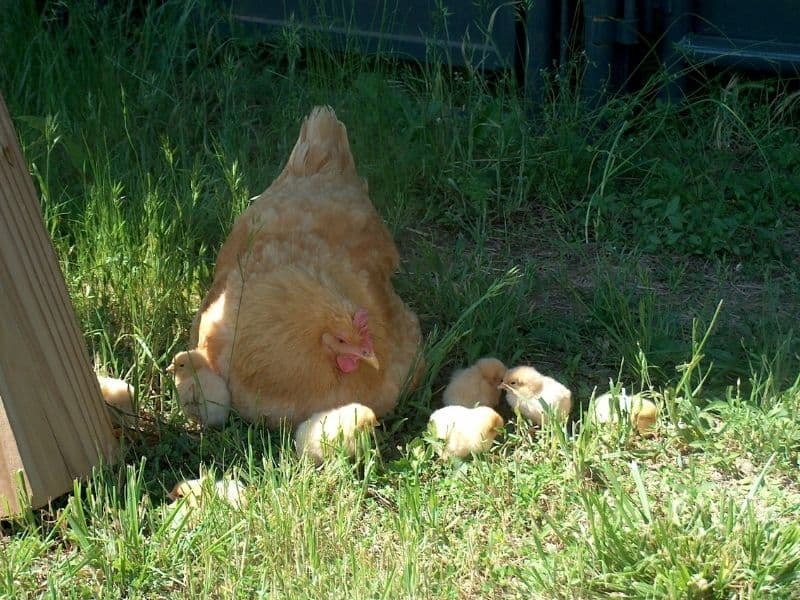
Orpington hens are known as excellent mothers who go broody fairly regularly. They are seldom so happy as when they are sitting on a clutch of eggs or tending a brood of young chickens. For this reason, they are favorites of people who want to raise chicks the old-fashioned way, without relying on continually buying new chicks at the feed store.
Additionally, a hen that is broody may care for purchased chicks that are not her own if a sly farmer can slip the babies underneath her while she is sleeping at night. This is a trick that hen keepers use to avoid having to use heat lamps and tend baby chicks in a brooder.
Special Care and Needs of Buff Orpington Chickens
Because Orpington chickens were developed before the advent of modern factory farming techniques and were created to be an average barnyard animal, many poultry scientists believe that this breed is much more hardy and healthy than many other more modern breeds of chicken.
They need the typical care that you would give any other chicken, like a well-balanced layer pellet, free access to fresh, clean water, and protection from dogs, foxes, raccoons, and other predators.
May need a bigger coop
Because Orpingtons are significantly larger than many other backyard breeds, you may want to provide extra space in the chicken coop and the barnyard. Also, be sure that you include extra perching spaces so that all of your chickens have an opportunity to roost at night. An Orpington chicken needs about 10 inches of roost space per bird and about 4 square feet of coop space per chicken. If the chickens are not going to free-range, they will need 8 or 9 feet in their closed pen to ensure adequate space for scratching and pecking.
Not doing great in bad weather
With their copious feathering, Orpingtons can get overly sodden in wet weather. When they are wet very long, they can catch a chill and die. Therefore, good hen keepers should be sure that these chickens can get out of bad weather on chilly, damp days. Also, because of their heavy feathering, they may suffer in the summer heat more than many other birds. Provide plenty of shade if you live in a place that has very hot summers, and you have Orpingtons in your flock.
Watch for mites
Because their feathers are so thick, Orpingtons may be more likely to collect lice and mites than some other breeds of chickens. Faithfully dusting them with insecticide powder can help prevent these pests, as well as providing the birds a place to dust bathe regularly.
Obesity might be a problem
Because Orpingtons are large birds with mellow natures, they may be more prone to obesity if they are unable to get adequate exercise. Be sure, if your Orpingtons cannot free-range, that you provide plenty of space for them to scratch and explore in your chicken yard to prevent obesity.
Prone to being bullied
The gentle, calm, and quiet natures of Orpington chickens may make them favorites as pets, but in a mixed flock, that quiet demeanor could be to the birds’ detriment. More aggressive breeds may peck at and abuse the gentle Orpington, or they may keep the Orpingtons from getting their fair share of food and water. You may need to house the Orpingtons separately from the more assertive breeds if they cannot get along.
Frequently Asked Questions About Orpington Chickens
Are Orpington chickens aggressive?
No, Orpingtons are calm, quiet, and sweet. Even the roosters are gentle. They make great pet chickens.
What colors do Orpingtons come in?
Orpingtons come in gray, black, white, blue, splash, and lavender, along with the most popular color, buff.
Are Orpingtons good egg layers?
Orpingtons are average layers, producing 3 to 5 eggs a week.
Are buff Orpington chickens good mothers?
Orpington chickens are excellent mothers and tend to go broody fairly often.
Are Orpington chickens hard to raise?
No, Buff Orpington chickens are very easy to raise, and they are great for those who have no prior experience with chickens.
Are Orpingtons considered dual-purpose chickens?
Yes. Orpingtons were bred to be a good egg-laying chicken that also is good for butchering. They take longer than the average meat chicken to fill out, but they are also good at laying.
How can you tell the difference between male and female buff Orpington chickens?
Roosters are much larger than hens. Roosters have larger, showier wattles and combs and long, fancy tails. As chicks, they are identical, but as they grow older, around the age of 8 to 10 weeks, the roosters will have bigger combs, start outgrowing their female flock mates, and begin to exhibit a little more aggressive manners.
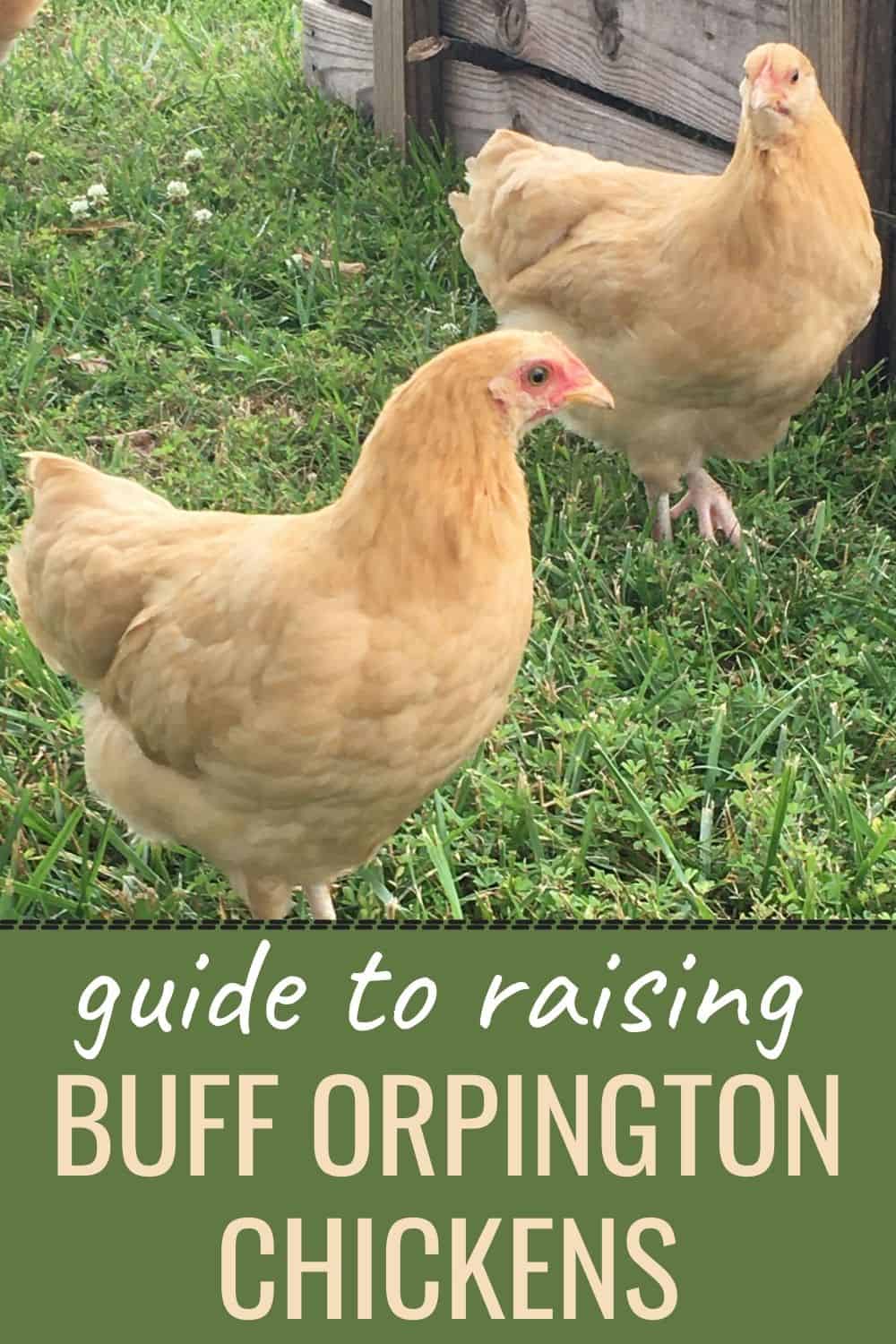

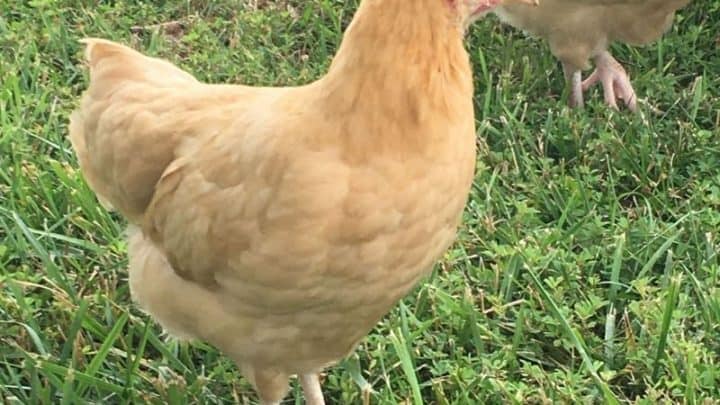



Stacey
Friday 27th of May 2022
Great article and so helpful to a new chicken mamma of lavender orpingtons. Thank you for sharing this with us!
How To Care For Baby Chicks - Guide To Raising Chickens In Your Backyard
Tuesday 27th of July 2021
[…] is the instinct to sit on the eggs until they hatch. Silkies, Brahmas, Orpingtons, and Cochins are some popular broody breeds. You will need a rooster to get fertilized eggs that […]
So You Have A Broody Hen: What Now?
Friday 21st of May 2021
[…] a full-sized hen, let’s say a Buff Orpington, 10-12 large eggs should be sufficient. If you have a bantam hen on eggs, you’ll want to give […]